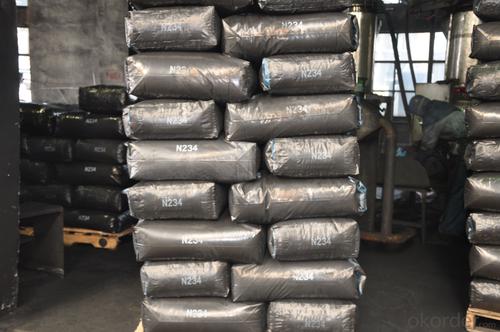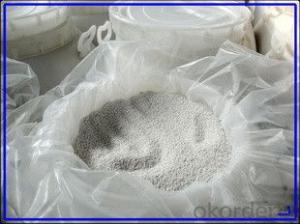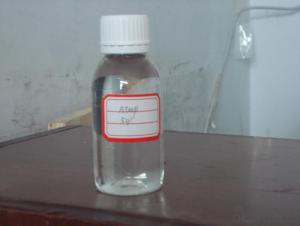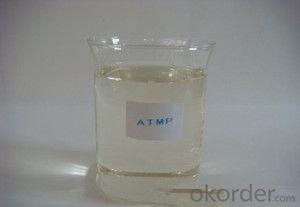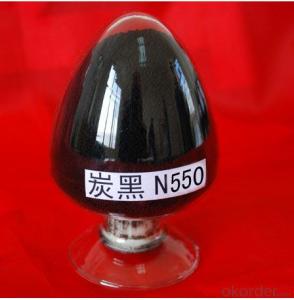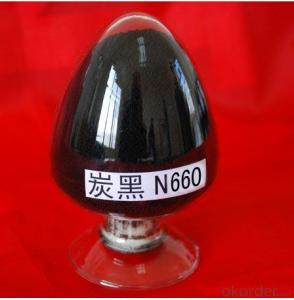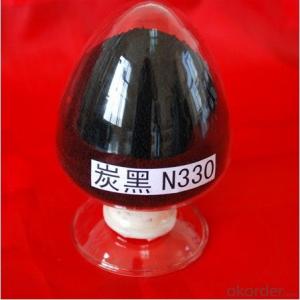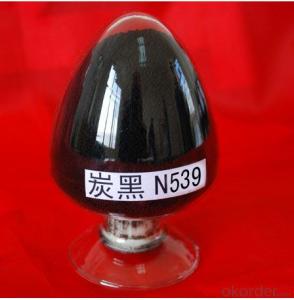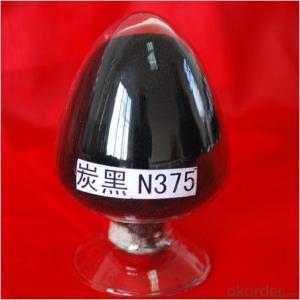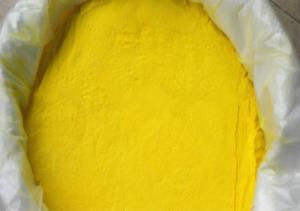Carbon Black N650 Granluar
- Loading Port:
- Tianjin
- Payment Terms:
- TT OR LC
- Min Order Qty:
- -
- Supply Capability:
- 10000MT m.t./month
OKorder Service Pledge
OKorder Financial Service
You Might Also Like
Carbon Black N650 (Granule)
Product Description:
carbon black N650:
1.Usage Rubber Auxiliary Agents;
2.Product Status:Black powder or granular;
3.Standard: ISO 9001:2000
Suggest for Use:
uses for the truck tire, passenger tire tread rubber, etc., and require high strength, high wear-resistant rubber products, such as high-strength conveyor belt, industrial rubber products.
TDS of the Carbon Black N650
Product Varieties | N650 | Pouring density(kg/m3) | 330~410 |
Iodine absorption Value(g/kg) | 32~40 | 300%modulus(Mpa) | -2.0~0 |
DBP absorption Value (10-5m2/kg) | 117~127 | Ash content | ≤0.7% |
24Mn DBP(10-5m2/kg) | 79~89 | 45um sieve residue | ≤0.05% |
CTAB surface area(103m2/kg) | 33~43 | 500um sieve residue | ≤0.001% |
STSA/(103m2/kg) | 30~40 | Impurity | NO |
Nsa surface area(103m2/kg) | 32~40 | Fine content | ≤10% |
Tint strength(%) | ----- | Tensile strength(Mpa ) | ≥-4.0 |
Heatloss(%) | ≤1.5 | Elongation at failure | ≥-60% |
Safety:
As a matter of good industrial hygiene, gloves and safety glasses with side shields or better eye protection should be worn when handing Carbon Black ,For more information, refer to the MSDS.

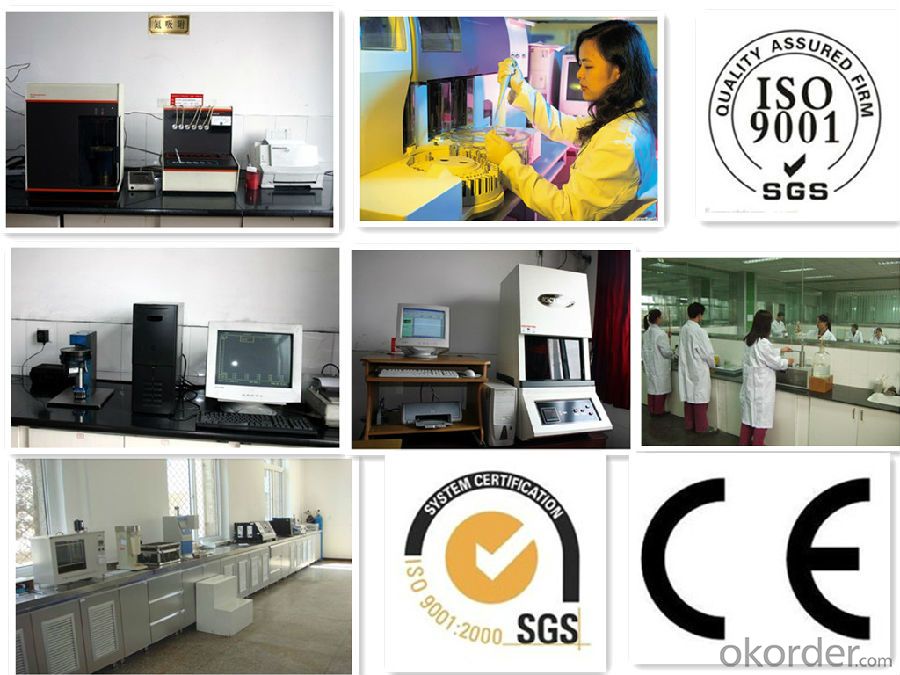

- Q: What are the pharmaceutical manufacturing companies now using PT / AL_203 catalysts?
- Yueyang Eagle Hill Petrochemical Plant
- Q: Which branch of chemistry or what specialty can study the catalyst
- Physical chemistry: catalyst surface structure, catalytic mechanism and catalytic reaction process
- Q: Briefly define a homogenous catalyst? Help please!?
- A homogenous catalyst is in the same phase as the rxn it is catalyzing. Most people think of catalysts as heterogenous: either sold (cat) liquid (rxn) (Raney Ni hydrogenation) or solid (cat) gas phase rxn) (catalytic convertors, NH3 production, SO2 oxidation, nitric acid production) polyethylene synthesis with Ziegler Natta catalysts. (Wikipedia). However starting probably with the Wilkinson hydrogenation catalyst Rh(PPh3)3Cl in 1966 a whole field of homogeneous catalysis has develope where the catayst is in soln. It proved to be a Renaissance for Inorg chem. These catalysts have several advantages over heterogenous catalysts: take place under mild conditions (green chem); the mechanisms are usually understood and can therefore be modified to be extremely specific for a substrate. There have been several Nobel Prizes in this area in the last decade because of their importance in organic synthesis: 2010, 2005, 2001. The one type of homolytic gas phase catalysis rxn I can think of are those that involve a radical chain mechanism: destruction of O3 by Cl? and chlorination (bromination) of alkanes.
- Q: And hydrogen peroxide
- Yes, as long as it is copper ions and iron ions on the line, such as FeCI can
- Q: To write a 1500 words of small papers, so please help you busy
- Want to write a good article do not reach out.
- Q: What is the difference between a catalyst and an oxidizing agent?
- A catalyst is a substance that increases a chemical reaction rate without being consumed in the reaction. Heat is probably the most common catalyst. In some cases the reaction will occur without the catalyst but very slowly. In other cases, the reaction will not occur. In the body, enzymes are often catalysts. An oxidizing agent, causes a compound to lose electrons and it is then said that that compound was oxidized. The oxidizing agent gains electrons and is said to be reduced. An example is hydrochloric acid. Is is oxidized by oxygen gas and loses hydrogen atoms leaving chlorine gas. The oxygen gains hydrogen atoms and forms water. The hydrochloric acid is oxidized and the oxygen is reduced.
- Q: My chemistry teacher wont tell me because it's in the higher course. And i'm not waiting a whole year to find out. And also, google is being a gimp about it. So thanks a lot if you know, I only have basic chemistry knowledge btw, lumen'ss terms if you can.
- Catalysts facilitate the reaction. They might work in several ways. Here is an example: Catalysts generally react with one or more reactants to form intermediates that subsequently give the final reaction product, in the process regenerating the catalyst. The following is a typical reaction scheme, where C represents the catalyst, X and Y are reactants, and Z is the product of the reaction of X and Y: X + C → XC (1) Y + XC → XYC (2) XYC → CZ (3) CZ → C + Z (4) Although the catalyst is consumed by reaction 1, it is subsequently produced by reaction 4, so for the overall reaction: X + Y → Z They might also just increase the surface area, thus speeding up the reaction. Example: Coke looses its fizz over time if left with the cork unscrewed. This is because the HCO3 is released as CO2. If you drop a menthos into the coke, it explodes with CO2, because the methos is full of tiny dents in the surface (thus giving it a massive surface area). (i blatantly copied the first example from the wiki)
- Q: Several experiments were carried out using catalysts
- Hydrogen peroxide in the manganese dioxide as a catalyst for decomposition reaction: 2H2O2 == MnO2 == 2H2O + O2 ↑ (laboratory oxygen principle)
- Q: put in a way that a freshman in high school can understand please =)
- Enzymes are actually biological catalysts composed of hundred of amino-acids, which are produced by living organisms. They are responsible for a number of reactions and biological activities in plants, animals, human beings and micro-organisms. There are also chemical catalysts that interact with other reactants and modify them without being changed themselves.
Send your message to us
Carbon Black N650 Granluar
- Loading Port:
- Tianjin
- Payment Terms:
- TT OR LC
- Min Order Qty:
- -
- Supply Capability:
- 10000MT m.t./month
OKorder Service Pledge
OKorder Financial Service
Similar products
Hot products
Hot Searches
Related keywords





